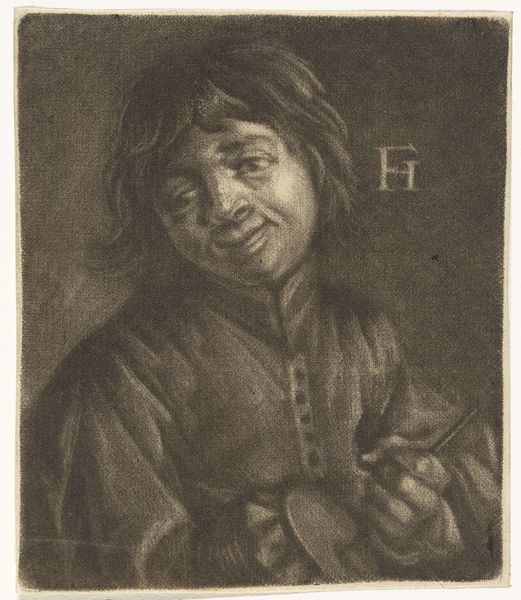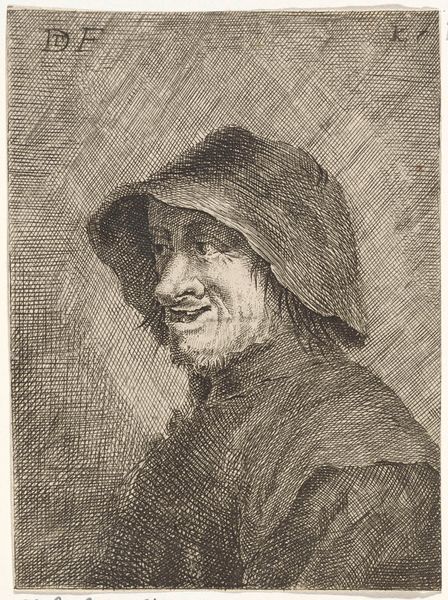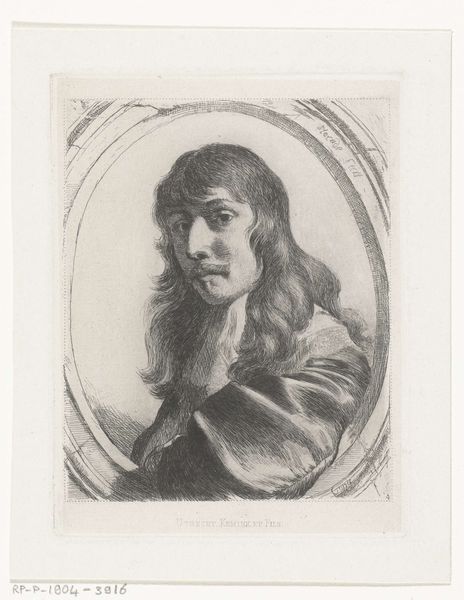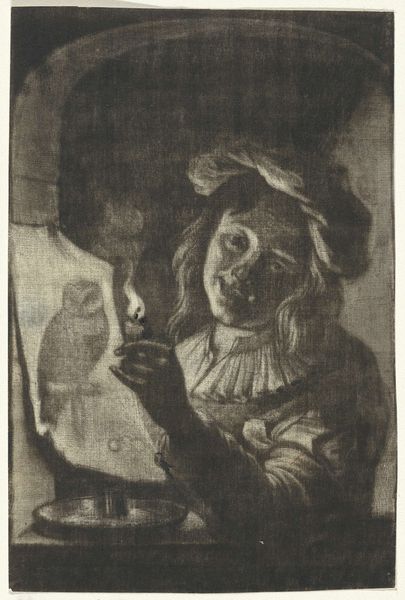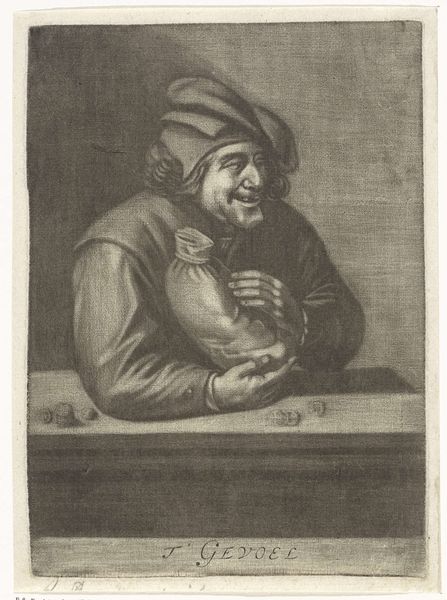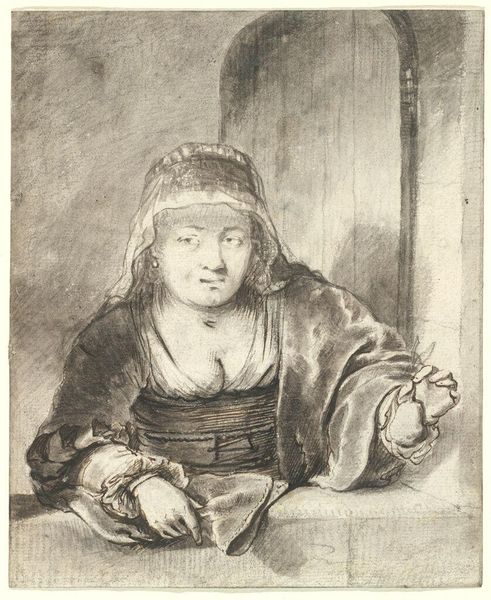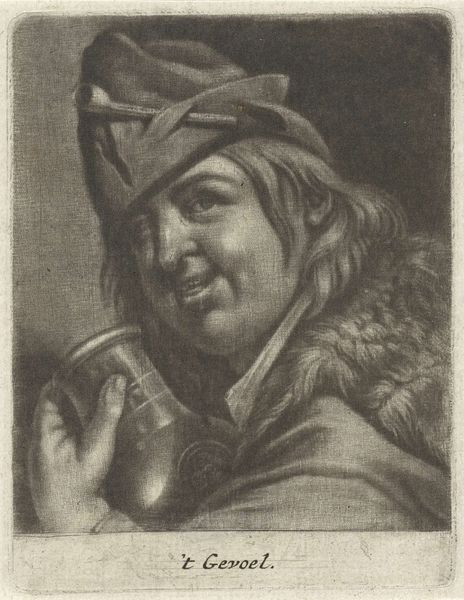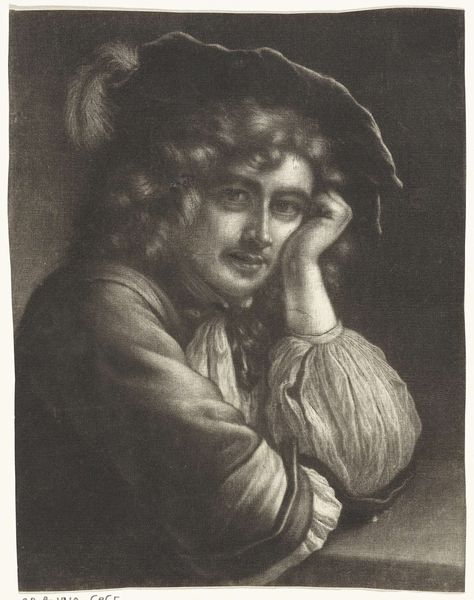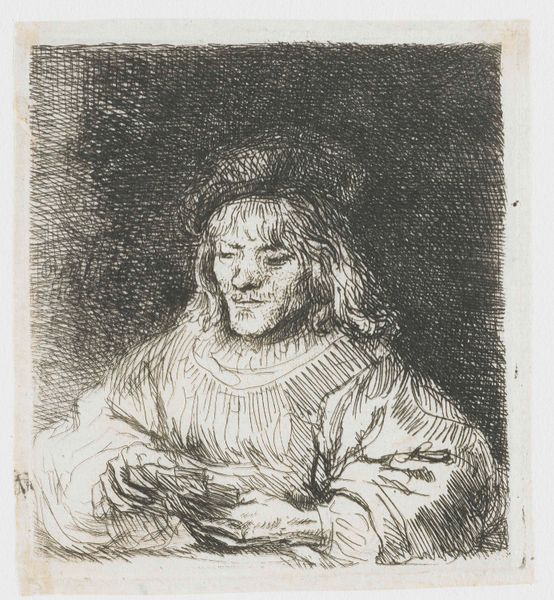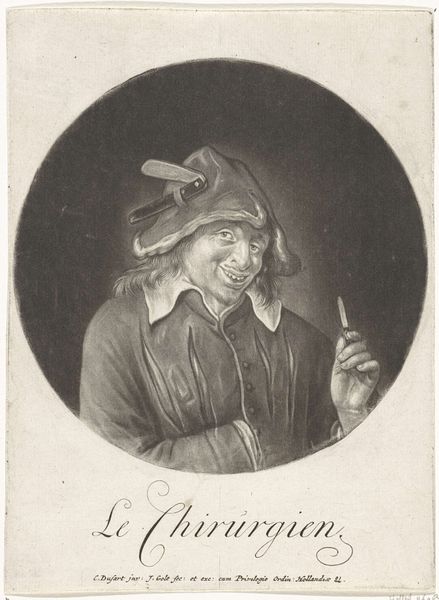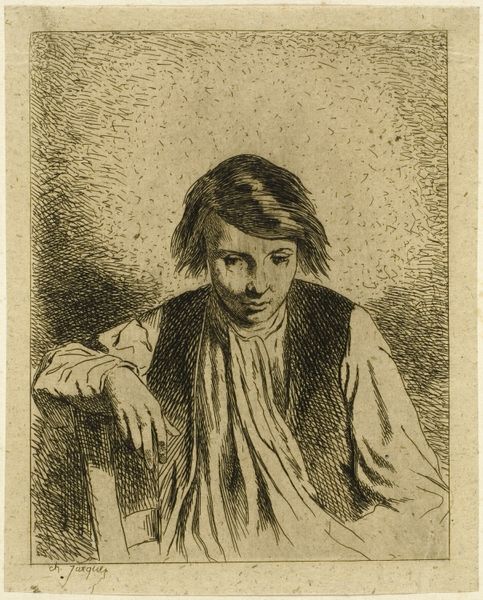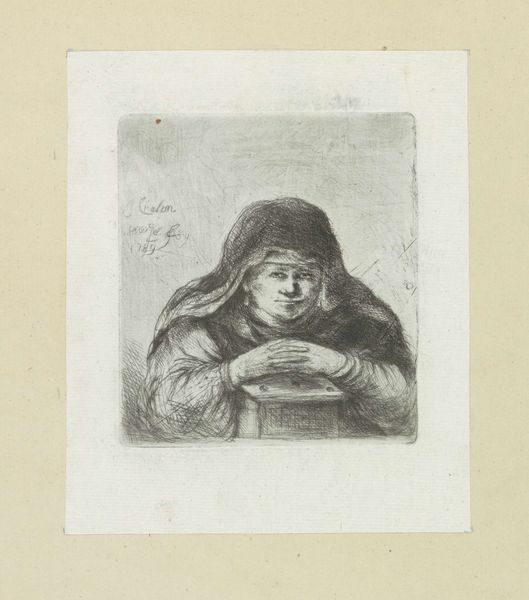
drawing, paper, ink, pen
#
portrait
#
drawing
#
baroque
#
caricature
#
charcoal drawing
#
figuration
#
paper
#
ink
#
pen
#
genre-painting
#
portrait art
Dimensions: height 123 mm, width 100 mm
Copyright: Rijks Museum: Open Domain
This small mezzotint, “Man met een fluit”, was made by Jan Verkolje the Younger, who lived between 1673 and 1755. The mezzotint process involves a copper plate, which is first roughened with a tool called a rocker to create countless tiny indentations that hold ink. The image is then created by selectively burnishing or scraping away these indentations to create lighter tones. Verkolje used this laborious, skilled technique to give the image a soft, almost velvety quality. The close attention to detail in the man’s face, the way the light catches in his eyes, and the texture of his clothing, give the work a striking sense of intimacy. Mezzotint, though complex and time-consuming, was a commercial printmaking process, allowing artists to produce multiple copies of an image for sale. The image is not only an aesthetic object but also a commodity, reflecting the social and economic systems of the time. It’s a fascinating convergence of artistry, skilled labor, and market forces.
Comments
No comments
Be the first to comment and join the conversation on the ultimate creative platform.
